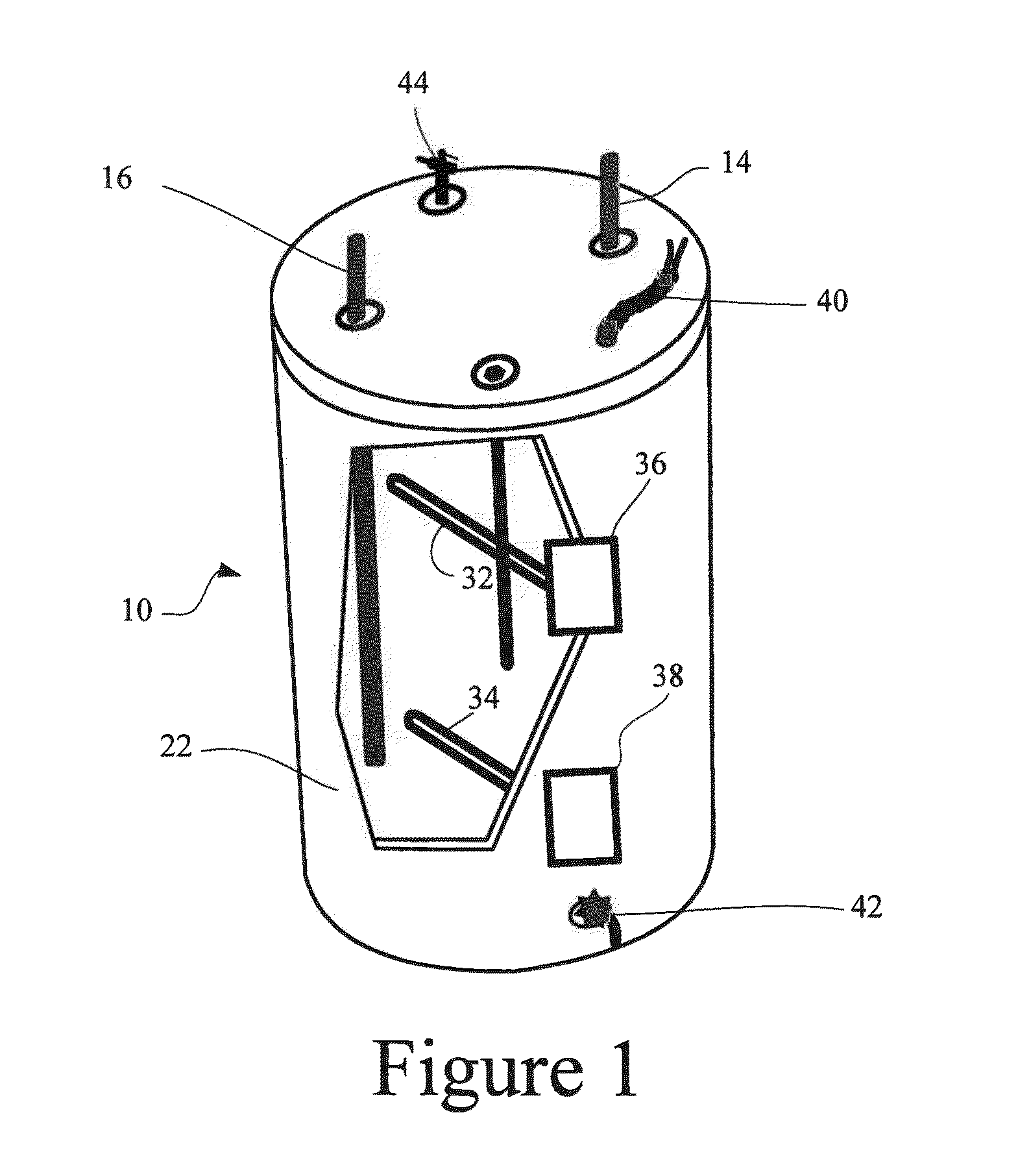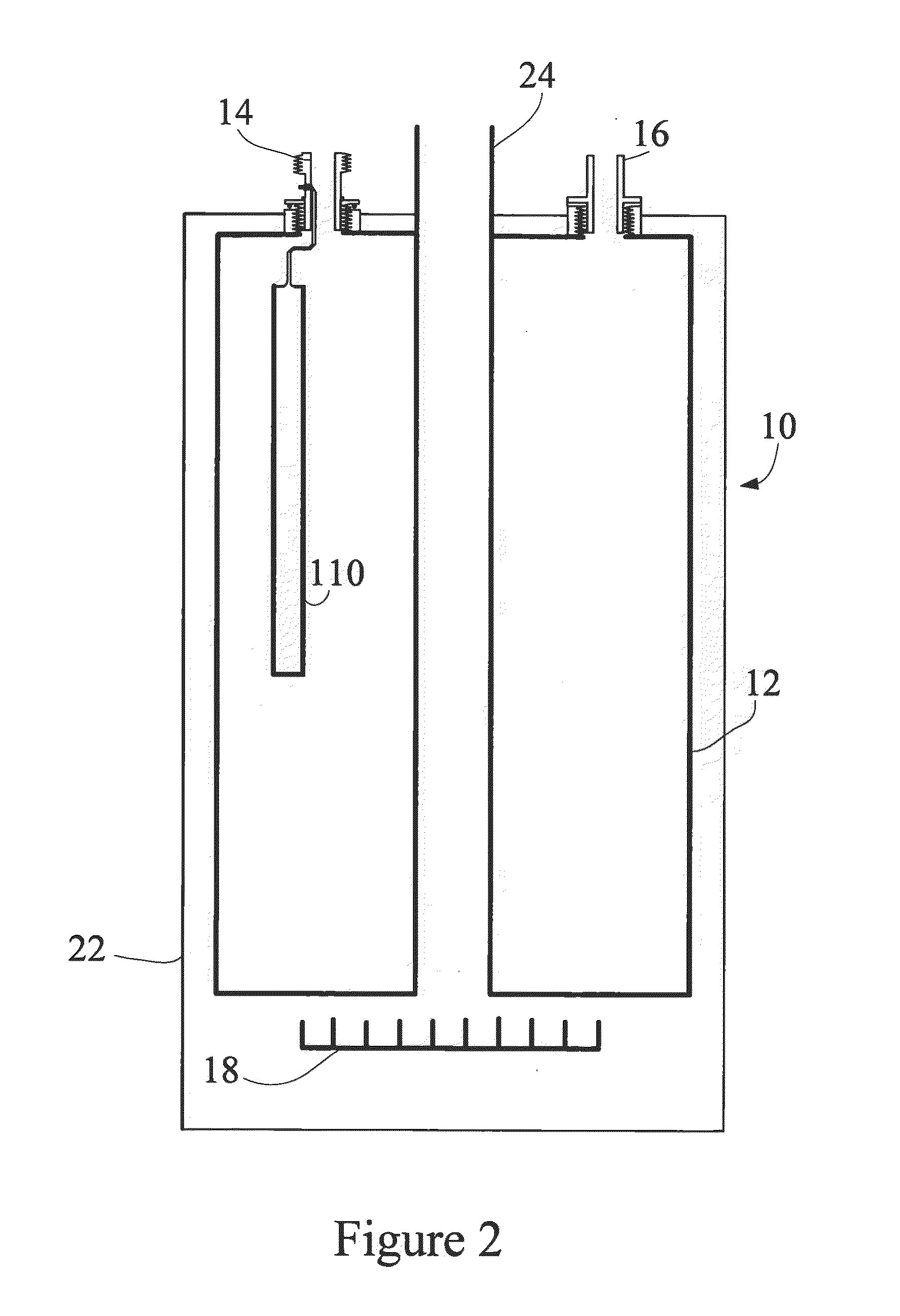Renewable Energy Hot Water Heating Elements
a technology of renewable energy and hot water heating elements, applied in the direction of lighting and heating apparatus, heating types, immersion heating arrangements, etc., can solve the problems of increased operating costs and large water heaters for commercial applications, and achieve the effect of enhancing the efficiency of hot water generation, net metering, and/or the generation of renewable energy credits
- Summary
- Abstract
- Description
- Claims
- Application Information
AI Technical Summary
Benefits of technology
Problems solved by technology
Method used
Image
Examples
first embodiment
[0105]In a first embodiment, a controller 80, which in some arrangements may include an inverter, receives power from a renewable energy source 60 and is electrically interconnected to a junction box 312. The controller 80 provides electrical power from the renewable energy source to the junction box 312. In addition, the controller 80 controls a switch within the junction box 312 to selectively connect and disconnect the power sources. For instance, the switch may disconnect the AC source 310 when sufficient electrical power is received from the renewable energy source 60. In this regard, upon determining that the power from the renewable energy source is above a predetermined minimum, the AC power source 310 is disconnected and electrical energy from the renewable energy source 60 is provided directly to the heater element 32. The electrical energy provided from the renewable energy source 60 may be in the form of a DC current or, if inverter is utilized, in the form of an AC curr...
second embodiment
[0107]In a second embodiment, AC current may be provided from the renewable energy source to the heater element 32. In this embodiment, an inverter may be combined with the controller or otherwise disposed between the renewable energy source 60 and the junction box 312. In a further arrangement, micro-inverters may be mounted on each of the PV panels of the solar array. Micro-inverters produce utility matching power directly at the back of the panel. Such arrays of panels are connected in parallel to each other and fed to an application and / or to the grid. This has the major advantage that a single failing panel or inverter will not take the entire string of panels offline. In any arrangement utilizing an inverter, AC current may be fed to the heating element 32 to generate heat. Again, such a system may utilize a junction box 312 that disconnects the AC power source 310 prior to application of the AC current from the renewable energy source 60. Alternatively, a block-in diode 314 m...
PUM
| Property | Measurement | Unit |
|---|---|---|
| temperatures | aaaaa | aaaaa |
| outlet temperature | aaaaa | aaaaa |
| cross-sectional area | aaaaa | aaaaa |
Abstract
Description
Claims
Application Information
 Login to View More
Login to View More - R&D
- Intellectual Property
- Life Sciences
- Materials
- Tech Scout
- Unparalleled Data Quality
- Higher Quality Content
- 60% Fewer Hallucinations
Browse by: Latest US Patents, China's latest patents, Technical Efficacy Thesaurus, Application Domain, Technology Topic, Popular Technical Reports.
© 2025 PatSnap. All rights reserved.Legal|Privacy policy|Modern Slavery Act Transparency Statement|Sitemap|About US| Contact US: help@patsnap.com



